Canada has been a Realm within the Western system of states for almost 475 years, a fact more appreciated in Québec-- which has, perhaps, a more ethnocentric view of history-- than in English-speaking Canada, where our country's history is usually seen in terms of colonial development. I have taken the extreme liberty, in this note, of changing the regnal numbers of our monarchs to emphasize the unbroken continuity and singularity of the Canadian kingdom over the centuries. Ordinal numbers are assigned, often retrospectively, to distinguish between individuals of the same regnal name who have reigned over the same territory; monarchs who have ruled over several territories are often assigned regnal numbers for each state: e.g. King James II of England and VII of Scotland, and King Louis XIII of France and II of Navarre. Of course, Sovereigns may style themselves as they please, and it is Her Majesty's pleasure to be known as Queen Elizabeth II of this and all of her other Realms and Territories. It must be noted that monarchies, and other forms of state, abounded among the aboriginal nations of Canada, and that many of them survive to this day.
King Francis I
1534 - 1547
also King François I of France
1515 - 1547
In 1524 our first king claimed the North American land of Acadia, and from 1525 to 1530 Basque fisherman and whalers regularly sailed in the St Lawrence and Saguenay rivers. In 1534 the king commissioned Jacques Cartier to claim new territories in the continent. Cartier mapped the Gulf of St Lawrence and lower St Lawrence River, named the land "Canada" and, on July 24th, 1534, set up a ten-meter cross at the Baie de Gaspé bearing the words "Long Live the King", which event may be seen as the formal establishment of the Canadian kingdom. On June 9th, 1537, Pope Paul III formally declared the indigenous inhabitants of Canada to be fully human and therefore obliged to accept the Catholic faith. Jean-François de La Rocque de Roberval became the first Lieutenant General of Canada in 1541, and France's explorations developed Canada's claim to vast territories in the continent's interior.
King Henry I
1547 - 1559
also King Henri II of France
1547 - 1559
Our second king was the son of Francis I, and focused his energies on European wars and the persecution of Protestants, while Canada developed its trade and fishery in competition with the English territory of Newfoundland, established in 1497 by King Henry VII and ruled by his successors for the 511 years since. Upon his death from a jousting injury Henry was succeeded by his son.
King Francis II
1559 - 1560
also King François II of France
1559 - 1560
and King consort of Scots
1558 - 1560
The third king, Francis II, married Mary, the Queen of Scots, at the age of 14, became King of Canada and France a year later and died at only 16, then succeeded his brother.
King Charles
1560 - 1574
also King Charles IX of France
1560 - 1574
Our fourth king from the age of ten until his death at only 23, Charles is, unfortunately, best remembered for the St Bartholomew's Day Massacre of French Protestants in 1572.
King Henry II
1574 - 1589
also King Henri III of France
1574 - 1589
and King of Poland
1573 - 1574
At Francis II's death in 1574 the Crown passed to his brother Henry, who had been elected King Henryk of Poland and Grand Duke of Lithuania the previous year. During his reign Newfoundland was formally established by Queen Elizabeth of England, on August 5th, 1583, as England's first overseas colony. King Francis was stabbed to death, aged only 37, and was succeeded by his cousin the King of Navarre. Our first five kings having been of the House of Valois, the crown of Canada now passed to the House of Bourbon.
King Henry III
1589 - 1610
also King Henri IV of France
1589 - 1610
and King of Navarre
1572 - 1610
While the sixth king of Canada is beloved as Henri IV of France, he is best remembered here as founder of Acadian settlements in 1605, and of Québec-- permanently established as capital of all of New France by Samuel de Champlain in 1608. The arrival of numerous French settlers during King Henry's reign coincided with Canada's expansion to include territories reaching from Hudson Bay to Nova Scotia, both of which limits the bordered territory claimed by England. Henry was murdered and succeeded by his nine-year-old son Louis.
King Louis I
1610 - 1643
also King Louis XIII of France
1610 - 1643
and King of Navarre
1610 - 1643
Under our seventh king, Louis, Canada developed rapidly. The king took a personal interest in the development and administration of Canada, and the characteristic Canadian seigneurial system was formally established by him in 1627. During his reign Canada's borders expanded to encompass the entire Great Lakes drainage area. In disputed Acadia, King James VI of Scots founded Nova Scotia in 1621 and the province's Order of Baronets in 1624. The Jesuits founded the Collège de Quebéc in 1635, and in 1642 city of Montréal was founded. After reigning from the age of eight to 42, Louis I was succeeded by his four-year-old son.
King Louis II
1643 - 1715
also King Louis XIV of France
1634 - 1715
and King of Navarre
1634 - 1715
Louis II of Canada and XIV of France reigned for more than 73 years, waging European and North American wars during most of them. Our eighth king created the Conseil de Québec in 1647, and in 1655 established the Viceroyalty of New France. In 1659 Québec received its first resident bishop; Bishop François-Xavier de Montmorency-Laval, founded the Séminaire de Québec, now the Université Laval, in 1663, also in the same year Canada was made a Royal Province and Jean-Baptiste de Repentigny was elected first Mayor of the city of Québec. Under King Louis II's rule Canada grew to include Louisiana: the entire drainage area of the Mississippi; our western frontiers also expanded west to the Rocky Mountains. At its apogee the Viceroyalty of New France was divided into the separate administrations of Canada, Acadia, Hudson Bay, Newfoundland and Louisiana. Nova Scotian Acadia, Newfoundland and Hudson Bay were all confirmed as possessions of the British Crown in 1713 by the Treaty of Utrecht.
King Louis III
1715 - 1763
also King Louis XV of France
1715 - 1774
and King of Navarre
1715 - 1774
Our ninth monarch, and the last of our four Bourbon kings, Louis III began the magnificent stone fortifications of Québec, and from 1731 the Chemin du Roy was constructed between Québec and Montréal. Louis involved Canada in the War of Spanish Succession and in the Seven Years' War, during which our country became the principle North American battleground of the warring European powers. Fortress Louisbourg was lost to the British in 1758, Québec in 1759 and Montréal in 1760. The Canadian-born Governor General, the Marquis de Vaudreuil-Cavagnal, surrendered to the British General Jeffrey Amherst on September 8th, 1760, during the reign of Great Britain's King George II, but the Crown of Canada was only formally ceded to the latter's grandson by the Treaty of Paris, signed February 10th, 1763.
King George I
1763 - 1820
also King George III of Great Britain and Ireland
1760 - 1820
and King of Hanover
1814 - 1820
George was our tenth king, and the first of the House of Hanover; a decade after our change of dynasties, the American Revolution broke out in Britain's lower thirteen colonies. The Treaty of Versailles in 1784 gave all the Canadian territories below the Great Lakes into the possession of the United States. The remainder of the kingdom was divided in 1791 into the provinces of Upper and Lower Canada; Acadia had been divided into Nova Scotia and New Brunswick in 1784. From 1791 to 1800 the king's brother, the Duke of Kent, became the first member of the Royal Family to live in Canada, serving in Halifax and in Québec, and eventually becoming Commander-in-Chief of North America. The United States Congress declared war against Canada and Britain in 1812, but the Americans were repelled and gained no new territory. The war was an outstanding example of Canada rejecting the United States and its idea of republicanism.
King George II
1820 - 1830
also King George IV of Great Britain and Ireland
1820 - 1830
and King of Hanover
1820 - 1830
King George I was succeeded by his son George II, who had been Prince Regent from 1811. During the reign of Canada's eleventh king our border with Maine was settled by arbitration, and parliamentary government became firmly established in Canada. He was succeeded by his brother.
King William
1830 - 1837
also King William IV of Great Britain and Ireland
1830 - 1837
and King of Hanover
1830 - 1837
King William was the first sovereign to have visited Canada, having served here from 1786 to 1787. The king granted responsible government to Newfoundland, which remained independent from Canada until 1949. During the last months of the twelfth king's reign, rebellions against his governors began in both Upper and Lower Canada. He was succeeded by the daughter of his brother, the Duke of Kent, the former Commander-in-Chief of Canada.
Queen Victoria
1837 - 1901
also Queen Victoria of Great Britain and Ireland
1837 - 1901
and Empress of India
1876 - 1901
Our first reigning Queen and thirteen Monarch had a long and eventful reign, during which the kingdom was granted responsible governemt and reunited first as the Province of Canada in 1840 and then-- on July 1st, 1867, with the provinces of the former Acadia-- as the sovereign confederation it has remained ever since. Both the Governor General and our first Prime Minister, Sir John A. Macdonald, wished the country to be formally styled; The Kingdom of Canada, but for fear of antagonizing the United States the word Dominion was decided upon instead. The queen personally chose Ottawa to be her new capital. When British Columbia entered the confederation in 1871 Canada acquired its Pacific coast for the first time in history; Manitoba had joined the previous year, and Prince Edward Island was reunited with Canada in 1873. The Queen's son, the Duke of Connaught, lived in Montréal from 1869 to 1870, and her daughter Princess Louise, the Duchess of Argyll, was Vicereine of Canada from 1878 to 1883. The queen was succeeded by her son.
King Edward I
1901 - 1910
also King Edward VII of Great Britian and Ireland
1901 - 1910
and Emperor of India
1901 - 1910
Canada's fourteen monarch was the first to have visited this country, having made a tour in 1860, during which he inaugurated the Victoria Bridge in Montréal and laid the cornerstone of the Parliament Buildings in Ottawa. During his reign Alberta and Saskatchewan were joined to the confederation as sovereign provinces. The king, first of the House of Saxony-Coburg, was duly succeeded by his son.
King George III
1910 - 1936
also King George V of Great Britain and Ireland
1910 - 1927
King of Great Britain and Northern Ireland
1927 - 1936
and Emperor of India
1910 - 1936
Our fifteenth monarch and his wife, our future Queen Mary, had toured Canada from coast to coast in 1901, and the king had visited Québec for the city's tercentenary in 1908. The king's brother Prince Arthur, the Duke of Connaught, served as Governor General of Canada from 1911 to 1916. In 1921 King George III granted Canada its present Coat of Arms to honour the kingdom's outstanding service during the First World War; during that war the name of our Royal House was changed to Windsor. The Statute of Westminster, of 1931, clarified the equality of Canada and the United Kingdom, marking the effective legislative independence of our realm. The king is known to have proposed his son, the future King George IV and VI, as Governor General of Canada in 1931-- a proposal ultimately rejected by his ministers-- and our next two kings were his sons.
King Edward II
1936
also King Edward VIII of Great Britain and Northern Ireland
1936
and Emperor of India
1936
The sixteenth Canadian monarch had toured this country in 1919, during which, he personally opened the third session of the 13th Canadian Parliament, and purchased a ranch in Alberta-- a property which he first revisited in 1923, and to which he returned many times. He abdicated after a reign of less than one year, our only king to do have done so, and was succeeded by his brother.
King George IV
1936 - 1952
also King George VI of Great Britain and Northern Ireland
1936 - 1952
Emperor of India
1936 - 1948
and Head of the Commonwealth
1949 - 1952
Having toured Canada previously, our seventeenth monarch was the first reigning king to visit Canada, undertaking an extensive tour in 1939. Among the king's first official acts in Canada were the acceptance and approval-- at the Royal Residence of La Citadelle de Québec-- of the Letter of Credence of the United States Ambassador to Canada, in order to demonstrate the sovereign status of his North American realm. A few days later the king, enthroned in the Canadian Senate, gave Royal Assent to Canadian laws, afterwards declaring, "No ceremony could more completely demonstrate the free and equal association of the nations of the Commonwealth." He led Canada and his other kingdoms through the Second World War; from 1940 to 1946 two members of the Royal Family, the Earl and Countess of Athlone, served as our Viceroy and Vicereine. In 1949 the king saw his realms of Canada and Newfoundland finally united after centuries of separate existence; during the same year he was acclaimed first Head of the Commonwealth. King George died aged only 56, and was succeeded by his daughter.
Queen Elizabeth
since 1952
also Queen Elizabeth II of Great Britain and Northern Ireland
since 1952
and Head of the Commonwealth
since 1952
The Queen, eighteenth Monarch of Canada since 1534, is frequently present in this country to participate in our national life, having made her first tour in 1951 while still Duchess of Edinburgh; in 1957 she personally opened the first session of the 23rd Parliament of Canada. During her 1957 tour she also made a State Visit to the U.S.A. in her capacity of Monarch of Canada, just as her father had done in 1939, stating in a televised address, "When I go to the United States I shall be going as the Head of the Canadian nation to pay a State Visit to the Head of our great neighbouring country. I shall be going in other capacities as well, but when you hear or read about the events in Washington, and other places, I want you to reflect that it is the Queen of Canada and her husband who are concerned in them." Her Majesty established the Order of Canada in 1967 and, in 1982, re-confirmed Canada's sovereignty by publicly signing, in Ottawa, the Constitution Act.
God Save The Queen!
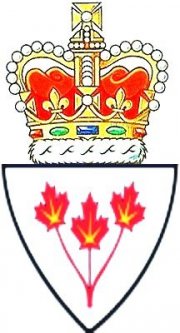
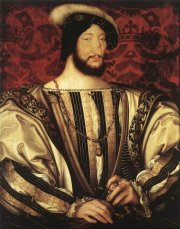

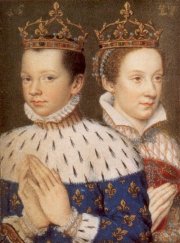

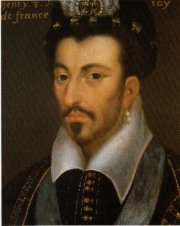
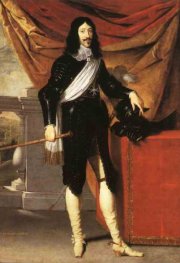
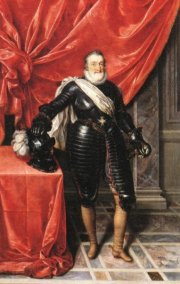
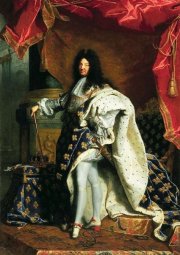
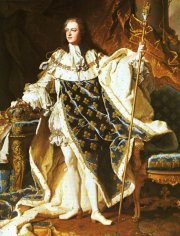
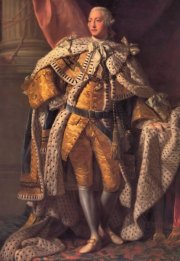
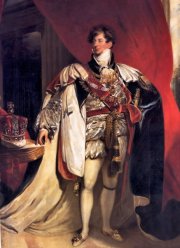
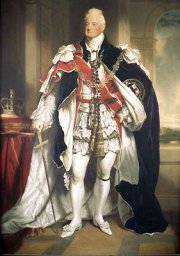

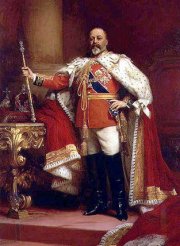
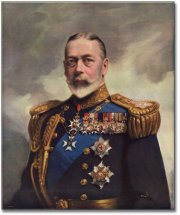
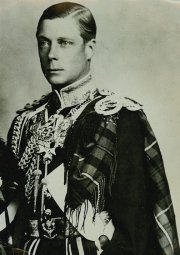
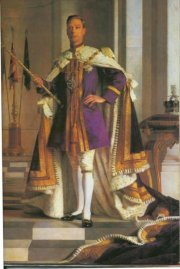
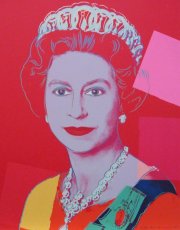
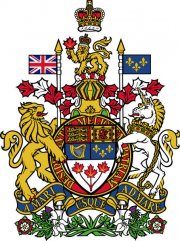
The Monarchs of Canada
by Brian de Fitz-James; 7, October, 2008